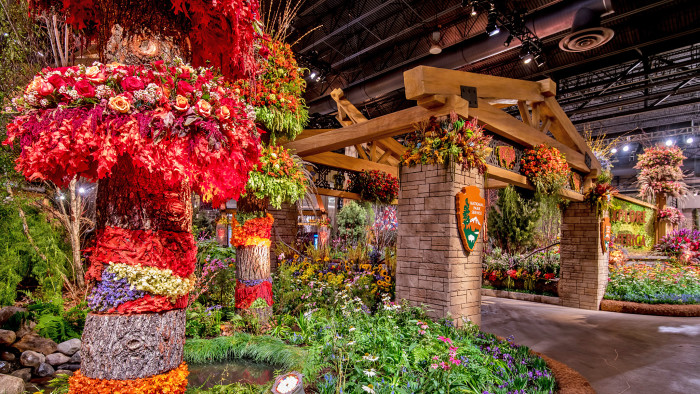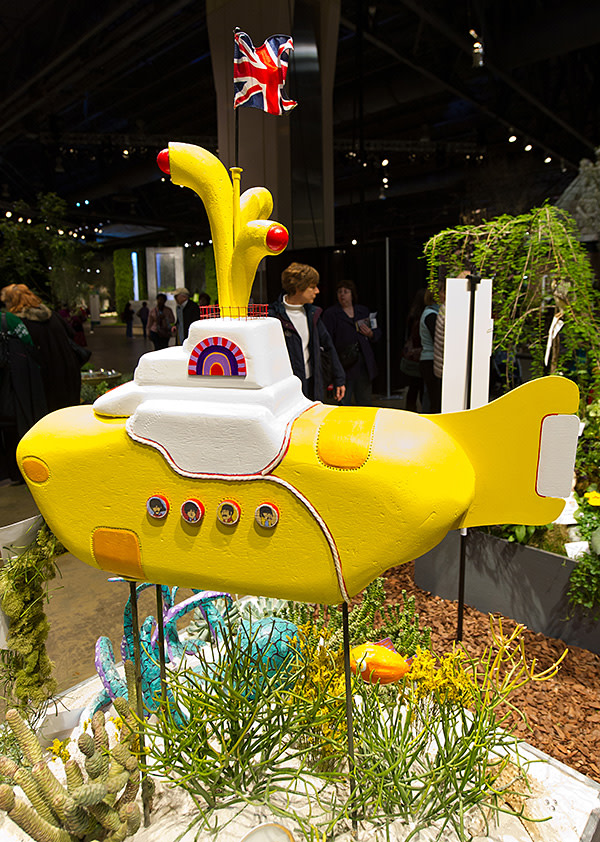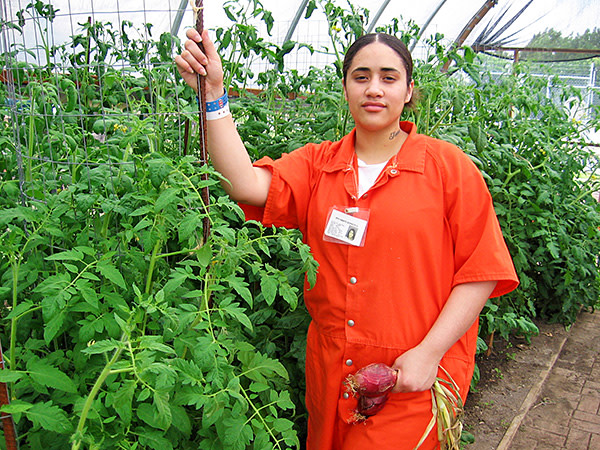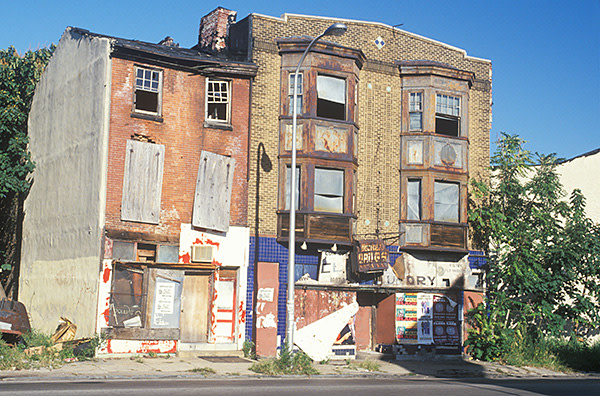How a flower show in Philadelphia led the way in urban ‘greening’

Simply sign up to the Life & Arts myFT Digest -- delivered directly to your inbox.
One night Bob Grossmann of the Pennsylvania Horticultural Society (PHS) was driving through a neighbourhood of Philadelphia dubbed “the Badlands”. At a red light two men walked towards his car. “It was an uncomfortable moment,” says Grossmann. “But I was wearing my horticultural society jacket. And one said to the other ‘It’s OK. He’s one of the dudes who put on the flower show’.”
The Philadelphia Flower Show was started in 1829 by the gentlemen farmers and botanists of the newly founded PHS, making it one of the oldest such shows in the world. Today, 250,000 people come each March to delight in the themed displays — Walt Disney last year, a celebration of the National Park Service this year.
Beyond the floral extravaganza, each year the show donates some of its profits towards programmes to make the city greener. Since 2003 the PHS has turned 8,000 vacant lots into public parks — a total of 250 acres — and planted more than half a million trees. About 3,000 of these lots are maintained by community organisations, from churches to drug rehabilitation programmes; there is also a programme for inmates who grow vegetables for food banks.
Garden shows have, of course, long contributed to the cities in which they take place. The Chelsea Flower Show in London is vital for the charitable work undertaken by the Royal Horticultural Society. This includes scientific research and advice for budding gardeners, the Britain in Bloom awards and the rescue of a decaying country house garden in Salford, Greater Manchester, now called RHS Bridgewater. But can a flower show have a lasting impact on its host city?

Few can match Pennsylvania for its progressive green legacy. The PHS’s greening strategy began in the early 1970s, when Philadelphia’s industrial sector was in decline and there were derelict factories and abandoned houses to spare. Sociologists and conservationists at the time described the city as a “doughnut”, with a void of neglect between the administrative core and the ring of prosperous suburbs.
Then the flower show started making a profit. “The ’70s was a decade in which community gardens and city farms and what you call ‘grow your own’ began,” says Grossmann. “They decided to use the profit to begin an urban greening programme.”
A 2007 study by Susan M Wachter, professor of real estate at The Wharton School of the University of Pennsylvania, found that greening a vacant lot increases the value of the adjacent site by 17 per cent. Another study in the American Journal of Public Heath last year suggests that heart rates slowed when walking from a vacant lot to a greened lot. More trees, healthier hearts.
In addition, the PHS works in partnership with Philadelphia’s city council to maintain public spaces such as Logan Square, the historic plaza at the heart of William Penn’s master plan for the city.
Yet elsewhere in the world urban green space is feeling the squeeze. Cycle 10 minutes from the beauties on display at the Chelsea Flower Show and see a different side of its host city. In Lambeth, on the opposite side of the river Thames, the area of green space per head has been reduced by 20 per cent in a decade as a result of rampant development and population pressure.

And since the financial crisis of 2008 the “quality” of urban public space has fallen: a cash-strapped council has little budget for horticulture. Schools, businesses and voluntary groups have been asked to step in to rescue once-proud Victorian parks. Vauxhall Gardens in Lambeth is a park on the site of vanished pleasure gardens which in their 18th-century heyday were as exuberant as a visit to Chelsea. Today, the annual landscape maintenance budget for the six-acre site is £10,500, less than a Knightsbridge socialite spends on flowers for a party.
Most troubling, perhaps, is a generation of children with “nature deficit”. London’s inner-city boroughs have 147,000 children in state secondary schools, but there is not a single site to which a biology teacher might take a class to study the science of plants. As many of these children live in flats without gardens, it is a generation who will grow up without seeing how bulbs become flowers, how a leaf has evolved to catch rainwater or how an earthworm maintains the soil.

Central London, then, could provide opportunities for environmental charities wishing to widen support, much as they have done in Philadelphia. The PHS’s programmes have raised awareness of green issues in unexpected ways, as Grossmann discovered at the traffic lights in the Badlands.
In the 1680s, the Quaker businessman William Penn set sail for the New World. He named the state he founded after his father and the word sylvania, the Latin for “forest land”. Philadelphia would be a “green country town” designed on a grid inspired by the residential squares and tree-lined streets taking shape in UK cities. Penn looked back to his native land for inspiration. Perhaps it is time for Britain’s gardeners to look across the pond.
Christopher Woodward is director of the Garden Museum in London
Photographs: Rob Cardillo; Pennsylvania Horticultural Society; Gilbert Carrasquillo/Getty Images; Visions of America, LLC/Alamy
Comments